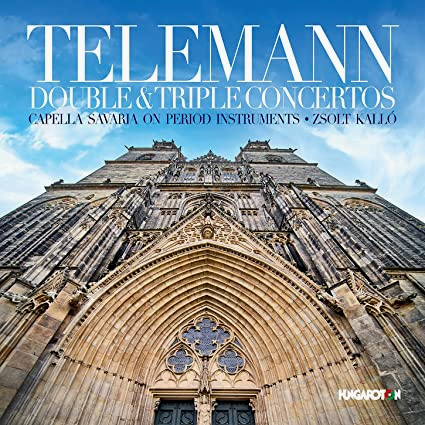
ESSENTIAL RECORDINGS

Concerto for Recorder and Flute in E minor, TWV 52:e1 Concerto for 2 Violins in C major, TWV 52:C2 Concerto for 2 Violas in G major, TWV 52:G3 Concerto for Flute and Violin in E minor, TWV 52:e3 Concerto for 2 Violins in G major, TWV 52:G2 "Darmstädter Konzert" Concerto for 3 Violins in F major, TWV 53:F1 (Musique de table)
Johann Sebastian Bach = 6,500. Antonio Vivaldi = 1,700. Georg Philipp Telemann = 850. If the current databases and catalogues are correct, these totals represent the number of available recordings by these three famous composers synonymous with the Baroque period in music. Given the quality of his music and the quantity of his works (over 3,000), I believe Telemann received the short end of the stick. He knew George Frideric Handel, and was the godfather to Carl Philipp Emanuel Bach, one of Johann Sebastian's sons. So obviously he was part of the "in crowd" at the time. Georg Philipp Telemann (1681-1767) was a self-taught German composer and instrumentalist who held many important posts throughout the country as Kapellmeister and Konzertmeister. He wrote operas, oratorios, multiple church cantatas, music for ceremonial occasions, and an abundance of chamber music and orchestral works. And like Vivaldi, his focus was on any given instrument's attributes as well as a musician's capabilities and development.
These concertos bear German, Italian and French influence, and employ a variety of techniques, rhythmic accents and styles. Established in 1981, Capella Savaria is considered to be the first period-instrument orchestra of Hungary. They use authentic 18th century instruments or copies thereof. They breathe an element of discovery within the music and throw into relief its sense of novelty, knowing full well that Baroque composers were breaking new ground. The interplay between the two instruments in the Largo movement of the Concerto for Recorder and Flute in E minor comes across very well here, both in expressive and dynamic balance. And the pinpoint accuracy of the ensemble work in the Presto movement of the Concerto for 2 Violins in G major for example, is clear evidence of this orchestra's hard work and dedication under the direction of Zsolt Kalló, this ensemble's concertmaster, soloist and artistic director, and presently a teacher at the Szombathely Conservatory of Music. Some of his studies were with the notable string quartet member, violinist and conductor Sándor Végh.
Nice to see an extra recording added to Telemann's tally. Here's hoping for many more to even out the score.
Jean-Yves Duperron - September 2021